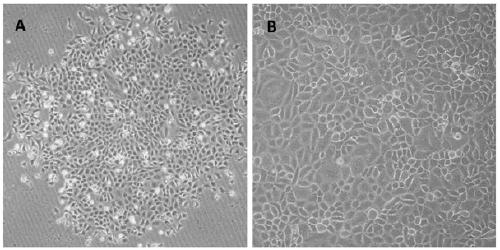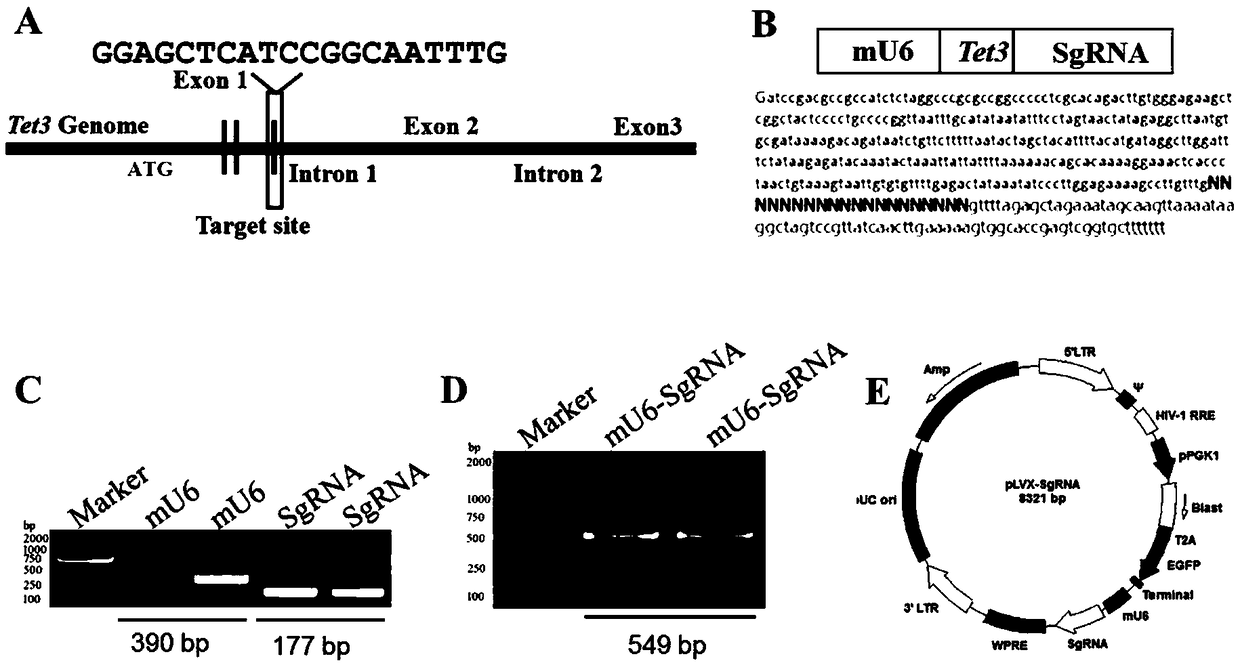Cell line for conditional induced knockout of mouse spermatogonia Tet3 gene and construction method thereof
A spermatogonia, gene knockout technology, applied in the field of genetic engineering, can solve the problem of off-target problems and other problems, and achieve the effect of easy observation, good effect and high repeatability
- Summary
- Abstract
- Description
- Claims
- Application Information
AI Technical Summary
Problems solved by technology
Method used
Image
Examples
Embodiment 1
[0029] see figure 1 , is the flow chart of the establishment method of conditionally induced mouse spermatogonia Tet3 gene knockout cell line of the present invention, specifically comprises the following steps:
[0030] 1) Screening of spermatogonia stably expressing the eSpCas9 gene
[0031] The packaged lentivirus (Addgene) carrying the eSpCas9 gene was used to infect the spermatogonia cell line, and the final screening obtained a monoclonal cell colony (such as figure 2 A), and finally obtained a large number of seed cells (such as figure 2 B), for later research use.
[0032] 2) Construction of pLVX-EGFP-mU6-Tet3-sgRNA vector
[0033] Referring to the Tet3 gene sequence (NM_183138) in the Ensembl database, according to the webpage sgRNA target prediction tool: http: / / www.broadinstitute.org / rnai / public / analysis-tools / sgrna-design-v1, the predicted target sequence is (GGAGCTCATCCGGCAATTTG) (SEQ ID NO: 1) (eg image 3A, located downstream of the first exon ATG); the p...
Embodiment 2
[0094] Example 2 Screening of Target Sequences
[0095] The inventor designed a lot of target sequences (see Table 8) during the research process. However, many target sequences have been verified by experiments. The target sites have no cleavage activity, or the cleavage activity is very low, and some target sites have off-target effects, while some target sites have no cleavage activity. Although the site has cleavage activity, it also has off-target effects. The target sequence 7 was finally screened. The genome predicts that there is no possibility of off-target. At the same time, the site has high cleavage activity. Only target sequence 7 is the only site in the mouse genome (see Figure 6 ), there is no similar or identical sequence, which indicates that the target is reliable and there is no off-target effect (using ENSEMBL database Blast results). Therefore, the present invention finally selects the target sequence 7 as the guide sequence.
[0096] Table 8 Tet3 target...
PUM
 Login to View More
Login to View More Abstract
Description
Claims
Application Information
 Login to View More
Login to View More - R&D
- Intellectual Property
- Life Sciences
- Materials
- Tech Scout
- Unparalleled Data Quality
- Higher Quality Content
- 60% Fewer Hallucinations
Browse by: Latest US Patents, China's latest patents, Technical Efficacy Thesaurus, Application Domain, Technology Topic, Popular Technical Reports.
© 2025 PatSnap. All rights reserved.Legal|Privacy policy|Modern Slavery Act Transparency Statement|Sitemap|About US| Contact US: help@patsnap.com



